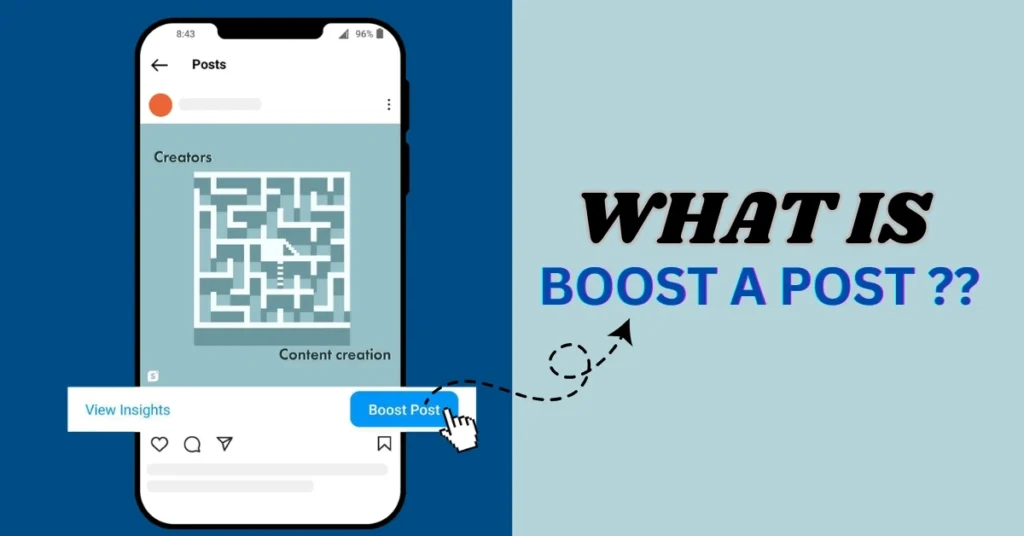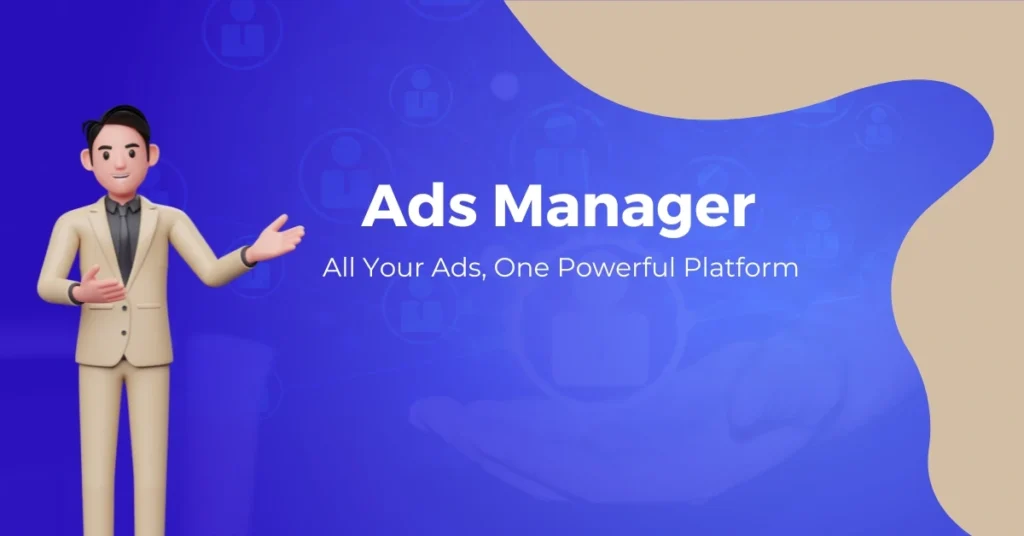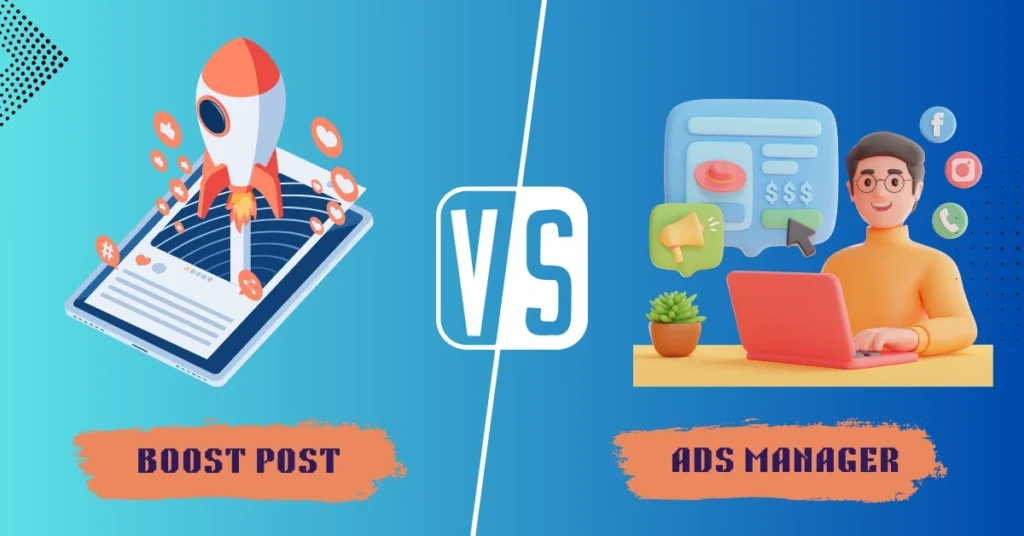“Boost Post” is a characteristic generally related to social media platforms, mainly Facebook, Instagram, and similar networks. It allows customers to promote their posts to a larger target audience beyond their current followers or friends. By boosting a publication, customers or organizations can increase the visibility of their content, increase engagement, and reach new followers or clients.
What is Boost Post:-

A form of paid advertising, boosting a post allows users or businesses to pay for increased visibility of a selected post to a broader or targeted Audience. This feature is frequently found on social media platforms where users can create content such as status updates, photos, videos, or announcements.
How Does it Work:-

In Boost Post, Many components are here:-
- Selection of the Post:- Users select a post from their social media feed that they wish to promote. It could be a status update, photo, video, or any other type of content.
- Audience Targeting:- The consumer defines the audience for the boosted Post. It includes demographic info (age, gender), place, chasing, and behaviours. This selection guarantees that the put-up reaches individuals who are most likely to have interacted with the content.
- Budget:- Users set a budget for how much they’re inclined to spend on promoting the post.
- Duration: The user also specifies the duration for which the post will be boosted. The budget determines how many people will see the post, while the duration recite how long the promotion will run.
- Ad Placement:- Choose where your boosted post will appear. Platforms usually offer options for placement across their own networks and partner networks. For example, Facebook allows placements in the News Feed, Stories, and the right-hand column.
- Payment:- Enter payment information if it’s not already saved on your account. Platforms typically support various payment methods like credit cards or direct bank transfers.
- Review:- Review your boosting settings to see if everything is correct. These include checking the post, budget, and duration. Once reviewed, submit or publish the boost.
- Monitoring and Optimization: After your post is boosted, you can monitor its performance through analytics dashboards provided by the platform. This includes the reach, impressions, and engagement. Based on the performance data, you can optimize the Ads.
Boosting posts on social media can be effective in increasing visibility and engagement, but it also has some drawbacks or negative points.
- Cost Consideration:- Boosting posts requires financial investment. For small businesses or individuals with limited budgets, this cost can be excessive. The cost of boosting posts can quickly add up, especially if not monitored carefully. Budget overruns can occur if the performance of the boosted post is not closely tracked.
- Diminished Organic research:- Dependable heavily on boosted posts might reduce the emphasis on organic content. If users see more promoted content, they might engage less with organic posts, impacting overall reach and engagement in the long term. Overuse of paid promotions might make a brand’s content seem less authentic or widely profile-oriented, which can reduce trust and engagement among followers.
- Limited Targeting:- While targeting options are available, they may not always be exact enough to reach highly specific audiences. Some platforms have limited targeting capabilities compared to more advanced advertising options.
- Short-term focus:- Boosted posts often provide only temporary boosts in visibility and engagement. The impact may disappear once the promotion ends, leading to a short-lived effect on overall performance.
- Quality Content:- Boosting quality or irrelevant posts can lead to wasted resources. Boosting should be reserved for high-quality, engaging content to maximize returns. Increased visibility doesn’t always translate to meaningful engagement.
- Tracking:- The outcomes of boosted posts can be complex. Measuring such as reach, impressions, and engagement needs to be analyzed carefully to understand their true impact.
- Negative reactions:- Overuse the post poorly targeted and show the many people who are interested or not interested. This can damage the brand’s reputation and negatively affect potential customers.
Poorly targeted ads can annoy users who feel the content is irrelevant or has unwanted potential.
Ads manager:-

Ads Manager is an advanced device used in digital advertising and marketing to create, manage, and analyze advertising campaigns. It is normally related to structures like Facebook and Google, wherein it serves as a centralized centre for advertisers. The tool allows customers to design ads, target particular audiences, screen performance requirements, and modify strategies to optimize consequences. This capability is critical for organizations of all sizes, from small startups to huge businesses, as it helps effective and green advertising and marketing efforts.
Key function:-
- Campaign creation: Ads Manager offers a platform for advertisers to create campaigns based completely on the score. This consists of putting marketing campaign objectives, defining goal audiences, and choosing advert formats. Users can select from various targets which include brand attention, lead era, or conversions, which guide the structure and content of the campaign.
- Targeting Audience:- One of the most effective features of Ads Manager is its focus on analytics. Advertisers can segment audiences based on demographics, tracking, behaviours, and region. Advanced options consist of custom audiences (e.g., existing clients) and lookalike audiences (e.g., customers similar to present-day customers). This precision guarantees that ads reach the maximum applicable customers.
- Ad Creation and Design: Within Ads Manager, users can create and design ads using various formats, including picture advertisements, video advertisements, carousel ads, and more. The device regularly includes built-in editors and templates to clean this system. Advertisers can also preview how advertisements will appear through special gadgets and placements.
- Budget:- Ads Manager permits users to set budgets and manage bids. Advertisers can pick among each day or lifetime budgets and set bid strategies (e.g., cost-per-click or cost-in-line with impression). This flexibility enables the manipulation of ad spending and optimizes the price performance of campaigns.
- Performance Tracking:- An essential aspect of Ads Manager is its analytics capabilities. Users can track key performance signs which include impressions, clicks, conversions, and return on ad spend. Detailed reports and insights help advertisers understand how their campaigns are appearing and distinguish areas for improvement.
- A/B Testing: To purify marketing strategies, Ads Manager frequently includes capabilities for A/B checking out (split testing). This entails walking a couple of variations of advertisements to see which plays better. Factors tested can consist of advert copy, pix, concentrated on parameters, and greater.
- Campaign Optimization: Ads Manager allows users to make real-time adjustments to campaigns using performance data. This could involve twisting targeting options, modifying ad creatives, or providing budgets to better-performing ads.
While Ads Manager gear (like those provided by way of structures compromise Facebook, Google, or LinkedIn) is influential for coping with and optimizing ad campaigns, they have a few drawbacks.
Complexity:
Ads Manager interfaces may be complicated and overwhelming for learners. There are many options, metrics, and functions to navigate, which can make it challenging to use correctly without a steep learning curve.
- Data Overload: The quantity of statistics and metrics can be overwhelming. Without an understandable method or information on what metrics depend on maximum, users might struggle to interpret and use the statistics successfully.
- Learning Curve: Effective use of Meta Ads Manager tools frequently requires bind schooling and experience. New customers may want time to become talented and won’t see immediate results.
- Performance Fluctuations: Ad performance can fluctuate because of modifications in platform algorithms, opposition, or market conditions. This inconsistency could make it hard to preserve solid outcomes.
- Platform Dependency: Meta Ads Managers are tied to particular platforms. If a platform adjusts its regulations, algorithms, or capabilities, it may affect how commercials are carried out and the way users interact with the device.
Difference between Boost Post and Ads Manager:-

| Features | Boost Post | Ads Manager |
| Ease of Use | Yes | No |
| Basic Targeting | Yes | No |
| Advanced Targeting | No | Yes |
| Multiple Campaign | No | Yes |
| Simple Budget Control | Yes | No |
| Detailed Budget Control | No | Yes |
| Comprehensive Analytics | No | Yes |
| Limited Ad Placement | Yes | No |
| Advanced Scheduling | No | Yes |
| A/B Testing | No | Yes |
| Basic Optimization | Yes | No |
| Advanced Optimization | No | Yes |
| Basic Audience | Yes | No |
| Advanced Audience | No | Yes |
| Limited Support | Yes | No |
| Extend Support | No | Yes |
| Custom Audience | No | Yes |
| Campaign Reporting | No | Yes |
| Automated Rules | No | Yes |
Boost Post is high quality for brief, honest promoting of person posts with minimum setup and attempt. It is best suited for those who want to increase visibility and engagement on current content with minimum customization.
Ads Manager, however, is more appropriate for particular and strategic ad campaigns. It offers superior targeting, financial control, and optimization features, making it better for agencies seeking to run complicated, multi-faceted ad strategies.
Conclusion:-
In virtual advertising, Boost Post and Ads Manager are distinct tools provided by platforms like Facebook (Meta) to manage and optimize ad campaigns.
Each tool caters to distinctive wishes and ranges of comprehension, and knowledge of their distinctions can assist marketers in finding the right technique for their advertising desires. This comprehensive end will delve into the key differences between Boost Post and Ads Manager, Explore their respective benefits and barriers, and provide guidance on stunning each tool effectively.
Boost Post is an exceptional device for those seeking an easy, short way to enhance the reach and engagement of existing content material. It is so easy to address and ideal for small agencies, male or female marketers, or all of us looking for an honest technique to promote posts without the need for massive ad management expertise. However, its barriers in concentrated, price range management, and overall performance evaluation imply that it can no longer be sufficient for more complex or highly targeted advertising and marketing needs.
Ads Manager is a more state-of-the-art and comprehensive device designed for customers who require advanced features and unusual manipulation of their advertising and marketing campaigns. It is mainly acceptable for groups and marketers who want to put into effect complicated strategies, tune performance accurately, and optimize campaigns for various objectives.
Ads Manager is a powerful tool designed for customers who need advanced functions and sizeable management over their advertising efforts. It is considerably applicable for companies and marketers with more complicated advertising desires, inclusive of the ones requiring particular concentration on, specified performance view, and complex price range management. While it has a steeper gain Compared to Boost Post, its depth and versatility make it invaluable despite the steeper learning curve devices for reaching unique advertising and marketing desires and optimizing marketing campaign performance. To use Ads Manager, we engage a digital marketing agency.
In conclusion, the Boost Post and Ads Manager provide valuable features tailored to exceptional advertising needs. Understanding the strengths and barriers of every tool lets entrepreneurs select the most appropriate one primarily based on their specific dreams, understanding, and budget. By leveraging these tools efficiently, users can maximize the impact of their marketing efforts and obtain their desired consequences.
FAQs:-
- What is Boost Post?
Ans. Boost Post is an easy method to promote existing posts on your Facebook Page to reach a wider audience. This design is for quick, straightforward promotions.
- What is an Ads Manager?
Ans. Ads Manager is a comprehensive tool for developing, handling, and analyzing Facebook advert campaigns. It provides considerably more advanced features and customization options compared to Boost Posts.
- How do Boost Post and Ads Manager differ in terms of complexity?
Ans. Boost Post is person-pleasant and clean to use, making it appropriate for users who want a short way to grow the visibility of a selected publish.
Ads Manager provides a detailed and customizable ad advent process, imparting greater manipulate over-concentration on, budgeting, and ad codecs. It’s better for users with specific marketing dreams or complex marketing campaign needs.
- What targeting options are available with each?
Ans. Boost Post: Basic targeting alternatives involve area, age, gender, hobbies, and behaviours.
Ads Manager: Advanced focused on alternatives consisting of custom audiences, lookalike audiences, particular demographic concentrated, hobby-based concentrated, and behavioural focused.
- What should you choose if you’re new to Facebook advertising?
Ans. Boost Post: For newcomers seeking a simple way to begin promoting posts, Boost Post is an excellent option.
Ads Manager: If you are searching for more control and customization and are willing to appoint the tool, Ads Manager is better suited for more advanced campaigns.
